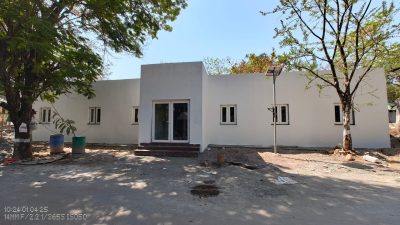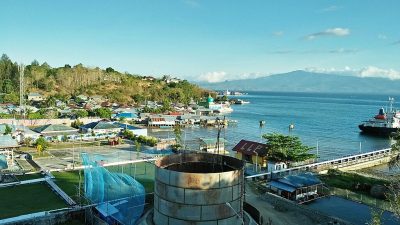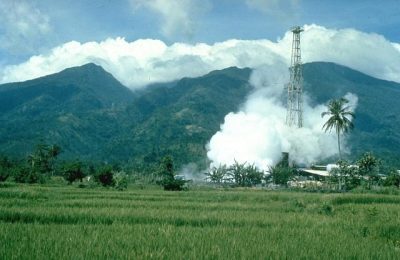Geothermal could answer the energy need of Ladakh, India
While a geothermal pilot projects provides attractive heat to a local venue in Leh, Ladakh/ India, it could also provide a great opportunity of electricity for the region.
Residents of Chumathang, a village located on the banks of river Indus near the Indo-China border in Leh district of the Union Territory of Ladakh, flock to a local café to keep themselves warm. The temperatures outside often plummet to as low as minus 15 degrees, but thanks to the nearby hot spring it remains a cosy 20 degrees inside.
The relative comfort of the villagers has been made possible by a Demonstration Project on Space Heating using Geothermal Energy. The project is funded by the Union Government’s Department of Science and Technology with technical inputs from Geological Survey of Iceland (ISOR), Norwegian Geotechnical Institute (NGI), Wadia Institute of Himalayan Geology, Dehradun, and National Institute of Technology, Hamirpur.
A demonstration was set up in 2015 and in 2017, the project started to operate.
Says Rajeshwar Banshtu, Principal Investigator from NIT Hamirpur, reports that “the equipment for the demonstration project has been sourced free of cost from Norway and Iceland under the Indo-Norwegian co-operation project. Scientists from the two countries visited Ladakh and chose Chumathang as the most suitable spot.”
The extreme winter temperatures often drop to minus 30 degree Celsius in Leh district. Geothermal energy could be the answer to its power needs. Says CP Dorjay, a geologist who resides in Leh, “Of late the electricity station at Leh has been connected to the Northern Grid, so we do get power on normal days in the town. But the conditions are bad in the interiors, where people have to depend on materials like wood and cow dung to stay warm.”
Presently, most of region uses diesel, kerosene, and other locally available material to meet its power requirements for electricity and space heating. As per a report by D Chandrasekhram and Varun Chandrasekhar of IIT, Mumbai, Ladkah uses 50,000 liters of diesel per day to run generators to produce 17 MWe, which costs 2.92 billion rupees annually (as per current price of diesel) to the Indian exchequer. The total demand for electricity in Ladakh is 53 MW. The cost of diesel in Leh is twice that of Chandigarh as the fuel is generally airlifted from Chandigarh and Delhi in winters. Generators remain the only source of electricity. Compared to conventional energy, the geothermal version saves about 80% fuel cost and 8% operational cost in applications such as food processing and greenhouse cultivation.
Ladakh falls in the Himalayan Geothermal Belt. The UT has three major geothermal sites at Puga, Chumathang and Nubra. Banshtu says that as per scientific estimates the geothermal field at Puga alone could sustain a 20 MW power plant at current available depth of 250 meters. Demonstration projects such as the one at Chumathang could be scaled up to provide space heating to the village and the Army establishment nearby.
With the growing population and an increased inflow of tourists, the energy needs of Ladakh could see a sharp upswing in the future. Scientists say that Geothermal energy is the most suitable and sustainable source to meet the demand. Apart from protecting the pristine environment, it could give a fillip to the socio-economic conditions of the region.
Challenges, however, remain. The cost of production of geothermal electricity is high. It costs Rs 40 crores (around $5.3 million) to produce 1 MW if the site needs to be drilled more than 200 meters, though this is bound to decrease substantially as more projects are implemented. Then again, the technology and equipment for the large scale projects needs to be sourced from the western countries, which further adds to the costs. Private initiatives to generate electricity from geothermal energy have not been successful. In 2005, GeoSyndicate Power Private Ltd planned to set up 50 MWe power plant in Puga for generating power as also set up systems for direct applications like greenhouse cultivation and space heating. But nothing came of it. Unlike solar power, geothermal energy is presently not on government priority list. Says Bhoop Singh, “I approached the then Army commander to utilize the freely available resource for space heating, but he chose to stick to the status quo and refused citing budget constraints and the lack of provision for such projects.” Scientists hope that the scenario may change down the line as the advantages become too obvious to ignore.
Just like Ladakh, Himachal Pradesh too has abundant sources of geothermal energy on rivers Alaknanda, Beas, Bhagirathi and Sutlej (Tattapani) among other places. It remains up to the state government to make the most of it.
Source: Tehelka



















